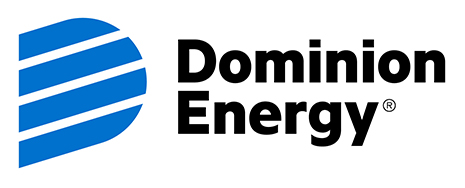Broadridge Corporate Issuer Solutions
P.O. Box 1342
Brentwood, NY 11717
Phone: 1-800-552-4034
Fax: 1-215-553-5402
shareholder@broadridge.com
Call Center Hours:
Monday–Friday
8:00 a.m. - 6:00 p.m. EST




When will I receive my 1099?
Form 1099s are typically mailed or sent electronically in January according to IRS guidelines. You should receive your 1099 by mid-February.
How can I obtain a copy of my 1099?
You may download and print a copy of a Broadridge issued 1099 by accessing your online account at investor.broadridge.com. If you have not established an online account, you may follow the online instructions or contact us via the 800 number on your account statement or this site.
Dividend Reinvest Plans (DRIP) and Direct Stock Purchase Plans (DSPP) are plans provided on behalf of corporations to simplify investment activity. DSPPs offer investors the opportunity to buy shares directly from the corporation, via the transfer agent, often without involving a broker. Some plans do require that investors own a minimum number of shares prior to participating in a plan. The costs associated with DSPPs may be higher or lower than the costs of using a broker.
DRIPs offer shareholders the convenience of reinvesting dividends, minimizing the expense and effort associated with dividend checks.
Note that all shares held in a plan will be in DRS (book-entry) form. Certificates will not be issued for shares held in a plan.
Enrolling in a plan
Changing plan elections
You may change your plan investment decisions by taking the following steps:
Selling shares held in a plan
You may sell shares held in a plan by taking one of the following steps:
What is a "registered" shareholder?
A registered shareholder is the owner of record on the books of the corporation, generally kept by the transfer agent. The registered shareholder may be an individual, a trust, a broker, etc. Registered shareholders receive dividends, proxies and other communications directly from the corporation via the transfer agent or the corporation directly.
What are "street name shares" or "beneficial shares"?
Securities held in a brokerage account, and registered in the name of the broker or other institution, are referred to as being in "street name" or "beneficial shares." If you keep your stock with your broker in a broker account, you are a "street name" holder and are not directly registered on the company's records as maintained by the transfer agent. Company mailings, including dividends, will reach you through your broker. If you wish to move your shares from registered to beneficial ownership, Broadridge or your broker will help you do so.
What are the more common types of security registrations?
How do I transfer my stock and retain as registered shares?
If you hold certificates that you wish to transfer, please follow the steps below:
Broadridge Corporate Issuer Solutions
P.O. Box 1342
Brentwood, NY 11717
If you hold shares in DRS Book-Entry (no certificate), please follow the steps below:
How do I transfer registered shares to beneficial or street shares via my broker?
How should shares for transfer be mailed to Broadridge?
We recommend that all certificates be sent by registered mail, return receipt requested. It is suggested that the shipment be insured for 2% of the current value of the shares. In the event of loss, a surety bond of 2% will be required to replace the certificates. A surety bond is typically obtained by paying a premium to the surety company equal to 2% of the current value of the shares being replaced.
How do I obtain a surety bond?
You may obtain a surety bond from our independent insurance provider, The Chubb Corporation. Once you notify us of your certificate loss, we will initiate the process for you and then ask that you finalize the paperwork and submit the appropriate payment for processing.
What is a medallion signature guarantee?
The Uniform Commercial Code (UCC) entitles transfer agents and corporate issuers to receive signature guarantees to protect them against fraudulent and unauthorized transfers. Securities and Exchange Commission (SEC) regulations define the financial institutions that are eligible to provide such signature guarantees, e.g., commercial banks, brokers, credit unions, savings and loan institution. Signature Guarantee Programs have been developed and eligible financial institutions which subscribe to such programs are issued "Medallion Guarantee Stamps". Transfer agents are obligated to ensure that such stamps appear on the transfer documents and are entitled to refuse a transfer of shares if a signature is not guaranteed with a stamp. A notary stamp is not acceptable when transferring the ownership of stock.
How can I sell my shares that are held in certificate form?
Broadridge can support the sale of your shares if they are held in DRS (no certificates) as part of a Dividend Reinvest Plan (DRIP), Employee Stock Purchase Plan (ESPP) or Direct Stock Purchase Plan (DSPP). Your corporation you own stock in may also support a stock sale plan. If the stock issuer supports these stock options, you may deposit your certificated share(s) into the DRS Book Entry form or Plan form in order to sell through Broadridge. Otherwise, if your shares are not part of such plans, you must take your certificate(s) to a securities broker to sell the shares. There are many options when it comes to securities brokers, so make sure you are choosing one that will best suit your needs. To sell shares that are held in a plan, please refer to the FAQ section on "Stock and Dividend Plans."
If you have lost your share certificates, we can help replace them, by following these steps:
Step 1: Notify Broadridge in writing.
Broadridge Corporate Issuer Solutions
P.O. Box 1342
Brentwood, NY 11717
Broadridge will send you the documents necessary to obtain replacement certificates along with instructions to complete them.
Step 2: Complete and return paperwork
IMPORTANT: You must be able to provide the name of the security, the certificate number(s), the name of the registered owner(s), and the number of shares in all communications. Please indicate if the registered stockholder is deceased so the appropriate documents may be forwarded to you. If you do not have this information, you should call our Lost Securities Department at the 800 number on this site.
Why is my account considered dormant?
Under unclaimed or abandoned property statutes, states may consider investor accounts dormant where there is an absence of documented, owner-generated contact or when multiple attempts to contact the investor have resulted in returned mail. These rules apply within a defined period of time: typically 3 or 5 years and if there is no owner-initiated contact, the shareholder’s stock is considered “dormant”. In accordance with individual state unclaimed or abandoned property laws, due diligence letters are mailed out to shareholders to alert them that their accounts are at risk of becoming “dormant”.
What is “escheatment”?
Escheatment is the term used to describe the end result of unclaimed property compliance. It is the annual process of complying with state law whereby the state gains custody of assets meeting certain criteria for presumptive abandonment. The state holds the assets, or their cash equivalent, until such time as they are claimed by the owner or legal claimant. To claim proceeds from abandoned property, the investor must directly contact the state. Links to individual state unclaimed property programs may be found by visiting www.unclaimed.org. Your account will be escheated to your last known resident state or to the company's state of incorporation if you are a foreign owner who resides outside the United States.
Can the State take my shares if I hold a certificate?
Yes, your stock and any un-cashed checks in your account are reported to the state if the account is not kept up-to-date. Such reporting causes outstanding certificates in your possession to be cancelled and re-issued in the name of the State.
How can I avoid escheatment of my property now that I have received a Due Diligence Letter?
You can update your account by contacting Broadridge Corporate Issuer Solutions, the transfer agent, by responding to the due diligence and by logging in via the Log In button at the top of the page or on investor.broadridge.com to authenticate your identity and demonstrate your control over your account. Additionally, you can contact us via mail or by contacting a client service representative by calling the company specific number found here.
How can I avoid having an account which is considered dormant?
Please note that participation in the Dividend Reinvestment Plan is considered passive investing because dividends are automatically invested and not at the request of the shareholder. Such participation alone will not prevent your account from falling dormant in the future.
As a shareholder, continue to make periodic contact with Broadridge to keep your date of last contact current. This can be accomplished in a number of ways:
- Log in to your online profile via the Log In button at the top of the page or on investor.broadridge.com and review past transactions, download tax information, or update your account information.
- Log on to the Interactive Voice Response System (IVR) to check account updates. The company specific number can be found here.
- Vote your proxy or be sure to cash a dividend payment.
Broadridge Corporate Issuer Solutions
P.O. Box 1342
Brentwood, NY 11717
Phone: 1-800-552-4034
Fax: 1-215-553-5402
shareholder@broadridge.com
Call Center Hours:
Monday–Friday
8:00 a.m. - 6:00 p.m. EST